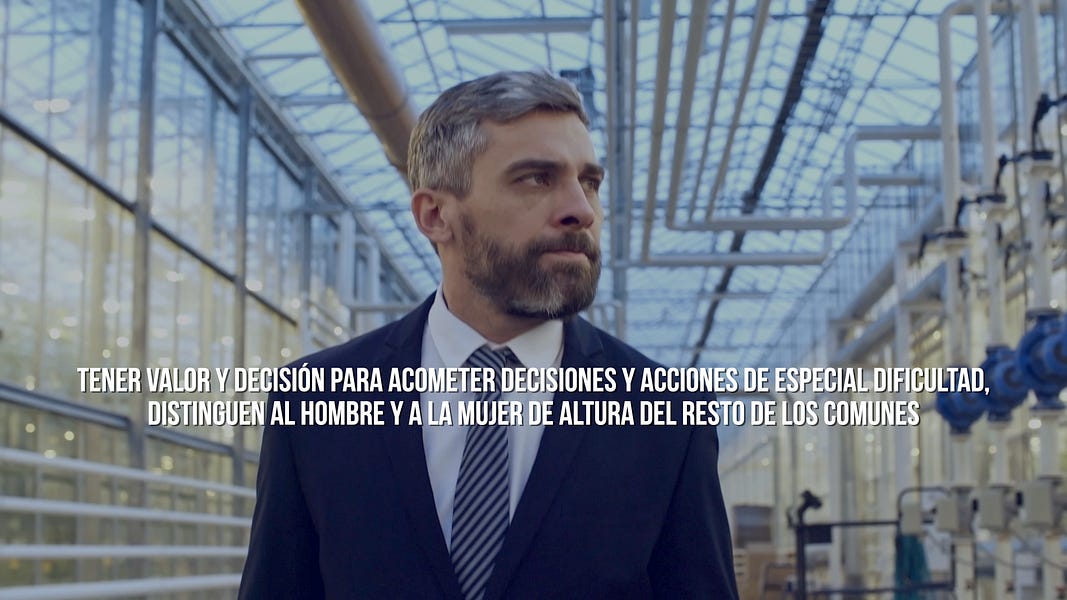Someone said that: "A Highly Qualified Way of Selling transforms the Sele into a Problem Solving System."
Wellcome I’m David, we enter a sophisticated Selling System, using for this, the 2 Dimensions of Advantage and that will allow us to talk about the DAPA Technique of Argumentation.
SCHEME 3 boxes. (Youtube video)
And what is DAPA?
And what is the meaning of those acronyms D.A.P.A.?:
The "D" for DAPA means that you have to start with the "D" for DEFINE, the needs, problems, desires, concerns, dissatisfactions, tastes, whims, etc., etc. of the client, through a structured dialogue between Seller and Client with that Objective.
The first "A" of DAPA, means that you have to get the "A" of ACCEPTANCE by the client, of the existence of those needs, problems, desires, concerns, dissatisfactions, etc ... etc ... previously defined.
Now I would be able to present to my client the Characteristics, transformed into Advantages, and these in turn transformed into Benefits, which will be adjusted to the previously Defined and Accepted needs and problems.
Now is the second part, the "PA" of DAPA. The “P” in DAPA is the PROOF of the Benefits of our offer and proposal, which we have already talked about. And the second "A" of DAPA refers to how to get ACCEPTANCE by the client of the validity of the given Proof.
When the sales professional has done a good DAPA with the client, things are “TIED AND WELL TIED”, because we have been able to demonstrate to the client that we have the Solution to his Problems.
And with that, we have achieved something really important. Transform this highly qualified way of Selling into a Problem Solving System, which is the DAPA Argumentation technique.
Let's talk about the FAB System, FEATURES, ADVANTAGES, BENEFITS, that is, we enter a new Argumentation System, where, starting from the FEATURES (characteristics), of our products and services, we are going to transform them into ADVANTAGES for the client and these Advantages, in turn, we are going to transform them into BENEFITS as the true solution tailored to the Client's Needs.
To do this, the first thing to do is define clearly, What are FEATURES? What are Advantages? and What are Benefits?
FEATURES: aspects, specifications, qualities of our products, ideas, services, measurements, suggestions, proposals, etc., etc. of our Offer. FEATURES - CHARACTERISTICS, describe the particularities of our product, of our offer, and answer the questions: What is it? What is special about it?
Now let's define ADVANTAGES:
Advantages explain how FEATURES can be used. Advantages answer the questions: What does it do? How does it work? What are they for? Those FEATURES.
And then we will transform Advantages into BENEFITS, knowing that the Benefits transform ADVANTAGES into one or more Purchase Motivations or Customer Desires.
The BENEFITS answers the questions: What does it bring to the client? What will it mean to the Client? How will he benefit from it? And a good way to start giving benefits is to use the word YOU Mr. client, ...
To give this Argumentation Methodology an eminently practical approach, I propose the following exercise:
First - Define a product or service of ours that we wish to present, sell, to a specific Client.
Second - Establish a Framework of that supposed Client, giving a “flash” of the Client, a brief description, of the situation of that Client, where we are going to include their Needs, already supposedly defined.
Third - Knowing the Client's Framework with their Needs and the product and service that we are going to present, sell; now we are going to apply our methodology starting from the: most significant FEATURES / transforming them into ADVANTAGES / and these, in turn, transforming them into BENEFITS.
Benefits that go out to meet the Customer's Purchasing Motivations or Desires, and that will satisfy the different "EIGHT Primary Motivations" that we defined in one of our first videos called: "Motivations, Leadership and the 8 Primary Motivations".
Since behind all Human Needs, there are the different Primary Motivations that underlie Human Acts.
REMEMBER: Motivation is the Final Reason for Human Behavior.
Now, if you like, Stop the video, and take some time to develop this interesting exercise of FEATURES, Advantages, and Benefits, for the Solution of the problems and needs of our clients.
How was the Exercise? ... I'm sure very well.
We will continue to deepen and decipher the World of ADVANCED SALES TECHNIQUES.

15:00h en YouTube: https://bit.ly/38I1QgD
Aprovechando que ya ha comenzado la temporada de Fórmula 1, quisiera explorar en este vídeo cuál es la repercusión del Trabajo en Equipo, el “Team Building, Team Work” en el desarrollo de la Fórmula 1, ya que esta competición vive gracias a él, e impacta en el desarrollo de la tecnología del sector de la automoción a nivel mundial. Hablamos de “FORMULA 1 Trabajo en Equipo”.
#Formula1 #TrabajoEnEquipo #F1
3 CLAVES PARA INICIAR UN NEGOCIO EXITOSO.
Iniciarnos en un negocio nuevo o mejorar nuestro negocio para así poder tener éxito en el futuro no es tarea fácil; si no cualquiera lo haría.
Si algo he aprendido por mi profesión a lo largo de los últimos 40 años y más de 3000 días entrenando a equipos comerciales y de gestión empresarial, es que existen factores claves que pueden condicionar el éxito o el fracaso de un negocio.
Veamos tres claves para iniciar un negocio exitoso y que también es de aplicación si ya lo hemos comenzado pero queremos hacerlo crecer de una manera más eficaz.
Primera clave, conocer a la perfección tus recursos.
Segunda clave, como crearnos un plan de acción enfocado a la planificación estratégica.
Tercera clave, la clave del éxito es la perseverancia, la persistencia, la determinación.

La Psicología del Miedo | Desarrollo Personal.
Youtube video:
El Miedo es la reacción que se produce ante un peligro inminente.
El Miedo sirve para reaccionar y escapar eficazmente ante ese peligro inminente.
En el vídeo de hoy vamos a dar 5 Estrategias para enfrentarnos al Miedo.















